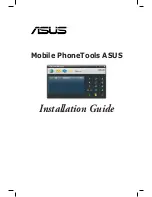
sipsupport@telematrix.net
Page 31
www.telematrix.net
PMS
Property Management System. The PMS and the IPBX must communicate
for various reasons. The phones do not communicate directly to the PMS,
only indirectly through the IPBX. The PMS knows a phone only indirectly by
its extension or room number.
Room
A room may have one or more phones installed. They may be of different
types. Each phone will have its own configuration. Each phone will be
connected to the network. There may be multiple types of room, standard,
deluxe, executive, suite, etc. The phones in a room are part of a group and
have the same extension number.
Network
The layer 2 network as it appears to the phone may be a simple LAN or a
VLAN. Lower end properties are likely to have only a single LAN which
carries voice and other traffic. Bigger properties are likely to have multiple
VLANs. The phones and IPBX will communicate via IP and will use IP
addresses to reach each other. The phones will obtain IP addresses, the
TFTP server address and VLAN assignments from a DHCP server.
Mass Configuration Utility
This tool creates the configuration files for the phones. The tool
must store the configurations in editable form. The configuration files are
ultimately placed on the TFTP Server for download by the phones.
DHCP Servers
Each LAN or VLAN must have its own DHCP server. The DHCP servers
provide at a minimum, an IP address, DNS server addresses and the TFTP
Server address to each phone as it powers up. In addition, DHCP may
provide a voice VLAN id (DHCP Option 132) and DSCP (DHCP Option 133)
and TOS values for voice traffic (DHCP Option 134). (*Support for the DHCP
Options is not available in the TeleMatrix SIP phones at this time.*)
Tasks
The main tasks carried out by the users are the source of the requirements for the system.
Configuration Creation
Using a representative SIP phone (3300IP/9600IP), the Administrator creates a
configuration for the phones. The phone configuration must be created in concert with the
IPBX configuration because IDs in the phone and IPBX configurations associate a phone
with an extension in the IPBX.
The phone configuration file is essentially a database of information describing the
configuration. When the configuration is complete, the Administrator can use the Mass
Configuration Utility (MCU) to write the multiple configuration files for all or a selection of
phones to be loaded on the TFTP server.
The MCU must generate a ConfigID for each phone configured. The configuration files
written to the TFTP Server will be named <ConfigID>.<phone type>.txt. (xxxx.3300ip.txt)
The ConfigID will be constructed from the room number and building.
















































